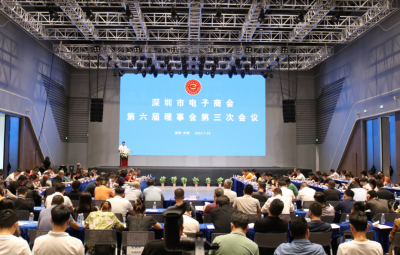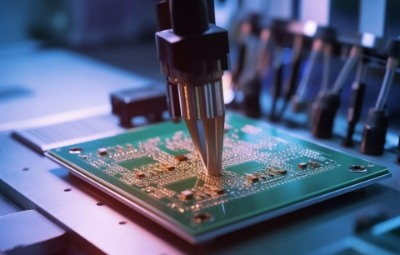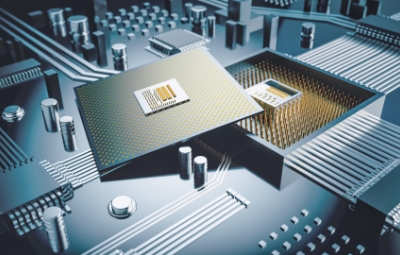1、Program Overview
An electric bicycle is a two-wheeled bicycle that uses an onboard battery as an auxiliary energy source, has the ability to pedal, and can achieve electric assistance or electric drive functions. They are energy-saving, environmentally friendly, convenient, fast, and have been widely used in many areas. An electric bicycle consists of an electrical system, a control system, decorative parts, a body part, and accessories. The core components are the frame, battery, motor, controller, and charger.
2、Functional definition and performance indicators
01 Electric assist function: Provides electric assist function, the electric motor provides auxiliary power while pedaling.
02 Electric drive function: Electric bicycles can be driven by electric motors only and can move without pedaling.
03 Intelligent functions: GPS positioning, intelligent diagnosis, etc., to achieve vehicle management through intelligent control.
04 Anti-theft alarm: The anti-theft function to prevent violent theft can be realized through the buzzer alarm circuit. Lighting and signal device: including headlights, taillights and turn signals to ensure riding safety at night and in low visibility conditions.
05 Lighting and signaling devices: including headlights, taillights and turn signals to ensure riding safety at night and in low-visibility conditions.
06 Energy recovery: Through the boost circuit, the electric energy generated during the gliding phase is released to the power supply to achieve reverse charging of the battery, thereby maintaining the battery, extending battery life and increasing cruising range.
07 Fast charging: Fast charging technology uses direct current charging (DC charging) to deliver electrical energy to electric vehicle batteries at a higher power, greatly shortening the charging time.
08 Cruise control: When the vehicle reaches a certain speed and is turned on, it will continue to move forward at the current speed, reducing hand fatigue and greatly reducing the damage rate of the speed control handle
09 Instrument display: The current vehicle speed and related status such as turn signal status, time and other information can be displayed through sensors.
三、The principle of electric vehicles
The working principle of electric vehicles is based on battery power supply. When working, the electric motor converts electrical energy into mechanical energy to drive the vehicle. The core components include batteries, electric motors and electronic control systems, which are responsible for energy storage, power output and vehicle management respectively. Electric vehicles recover energy through regenerative braking during braking to improve endurance. In addition, electric vehicles also integrate charging systems and electronic auxiliary equipment. Some models have regenerative braking functions. The control panel displays auxiliary functions such as power, speed, and adjustment of driving mode.

The picture shows a famous electric vehicle control module
四、Hardware Design

The electric bicycle is mainly divided into several modules as shown in the figure. The battery module is mainly responsible for supplying power to the motor and peripheral circuits, the motor drive is mainly responsible for driving the vehicle, the handlebar Hall switch is mainly responsible for controlling the motor output power, and other peripheral devices are mainly responsible for providing relevant data information and interacting with the outside world. This section mainly introduces the following related circuits: electric vehicle charger circuit, electric vehicle instrument panel clock circuit, handlebar signal amplification circuit, and peripheral power supply circuit.
01Electric vehicle charger circuit

Overall circuit diagram of charger circuit
The electric vehicle charger circuit mainly converts the input AC power into stable DC power for charging or other power management purposes. The circuit includes key parts such as input protection, rectification, voltage regulation, transformer voltage conversion, output rectification and filtering. The XBLW-UC3842 PWM controller is responsible for adjusting the switching frequency and duty cycle, while the TL431 provides a precise reference voltage to ensure the output voltage is stable. The circuit also integrates functions such as feedback regulation, control protection, and charging status indication, and realizes overcurrent and short-circuit protection through components such as the XBLW-LM393 voltage comparator and MOSFET.

Voltage regulation circuit using XBLW-UC3842
This circuit is a switching power supply circuit of XBLW-UC3842, which is used for the charger of electric bicycle. The circuit starts with a large-capacity input filter capacitor of 100uF/450V for overcurrent protection and smoothing the input voltage. D12 (16V Zener diode) and D13 (BYV26C transient voltage suppression diode) provide overvoltage protection. R28 and R33 are current limiting resistors used to limit the current flowing through D12 and D13. XBLW-UC3842 is a PWM controller with automatic feed-forward compensation, with an operating frequency of 500kHZ, used to generate PWM signals, control the switching state of the switch tube, and thus adjust the output voltage. R26 and R23 are bias resistors that provide the necessary bias current for XBLW-UC3842. D14 (4148) is a high-speed switching diode used to protect the output of XBLW-UC3842.

Charging control circuit using XBLW-LM393
The right half of the electric vehicle charger is the power supply voltage stabilization and charging control circuit, which is mainly used to provide a stable output voltage. It also has charging control, overcurrent protection, short circuit protection and anti-reverse connection protection functions. Through the voltage comparator and precision reference voltage source, the circuit can accurately control the charging process to ensure safe charging of the battery. Among them, D8 is a Schottky diode for input rectification, C16 and C17 are input filter capacitors for smoothing the rectified voltage. R15 and R16 form a voltage divider for detecting the input voltage. IC3 (TL431) is an adjustable precision reference voltage source, which together with R21 and C19 forms a voltage detection circuit. XBLW-LM393 is a precision voltage comparator used to monitor and control the charging process, and its offset voltage is as low as 2mV. R22, R23, R24 and R25 form a charging current regulation circuit. D9 and D10 are LED indicators for displaying the charging status.
02Electric car dashboard clock circuit

Electric bicycle real time clock circuit
This circuit is the clock circuit of the electric bicycle instrument panel, which mainly provides users with accurate time information through the instrument panel display. The real-time clock selects the XBLW-DS1302 chip. The XBLW-DS1302 chip maintains the accuracy of time through an external 32.768kHz crystal oscillator (Y1). In the circuit, the VCC1 and VCC2 pins are powered by the XBLW-DS1302, where VCC2 is connected to the +5V main power supply and VCC1 is connected to the 3V backup battery (BAT1) to ensure that the RTC can still work properly when the main power is disconnected. Two 10pF capacitors (C8 and C9) are connected in parallel with the crystal oscillator to stabilize the oscillation. The data interface includes CLK_IO (data input/output), CLK_SCK (serial clock) and CLK_RST (reset), allowing the microcontroller to communicate with the XBLW-DS1302 to set and read the time. The GND pin is connected to the circuit ground. Accurate timing can still be maintained through the backup power supply when the electric bicycle is powered off. And XBLW-DS1302 also has leap year compensation function.
03Handle turning signal amplifier circuit

Hall signal amplifier circuit using XBLW-LM324
This circuit diagram is an operational amplifier circuit, which uses the low-power operational amplifier chip XBLW-LM324, including an independent four-channel amplifier XBLW-LM324, with a quiescent current of 0.6mA. The circuit is mainly used for signal amplification and processing, and is applied to the speed control and brake signal processing system of electric bicycles.
04Peripheral power supply circuit

Using XBLW-L78XX series three-terminal linear voltage regulated power supply circuit
The circuit diagram is a three-stage linear regulated power supply circuit designed to reduce the input voltage to 5V. The circuit first drops to 24V through the XBLW-L7824 regulator, then the XBLW-L7815 further drops it to 15V, and finally the XBLW-L7805 stabilizes the voltage to 5V. Each regulator stage is equipped with input and output filter capacitors (such as C2, C3, C4, C5, C6, C7 and C8), which are used to smooth the voltage, reduce power supply noise, and ensure the stability of the output voltage. The current limiting resistor R11 is used to protect the circuit from excessive current. The entire circuit is connected to the ground to ensure stability and reduce noise. This multi-stage voltage regulation design is suitable for electronic devices that require precise low-voltage power supply. By stepping down the voltage, the circuit is able to provide a stable power supply while reducing voltage fluctuations and noise, improving the power supply quality, and providing stable power supply for the peripheral circuits of electric bicycles (such as turn signals, clock circuits, display circuits, etc.). The XBLW-L78XX series has a maximum output current of up to 1.5A and has thermal overload and short-circuit protection.
五、Logic block diagram

六、Recommended important components for this solution

Recommend News
-
Phone
400-9682 003




